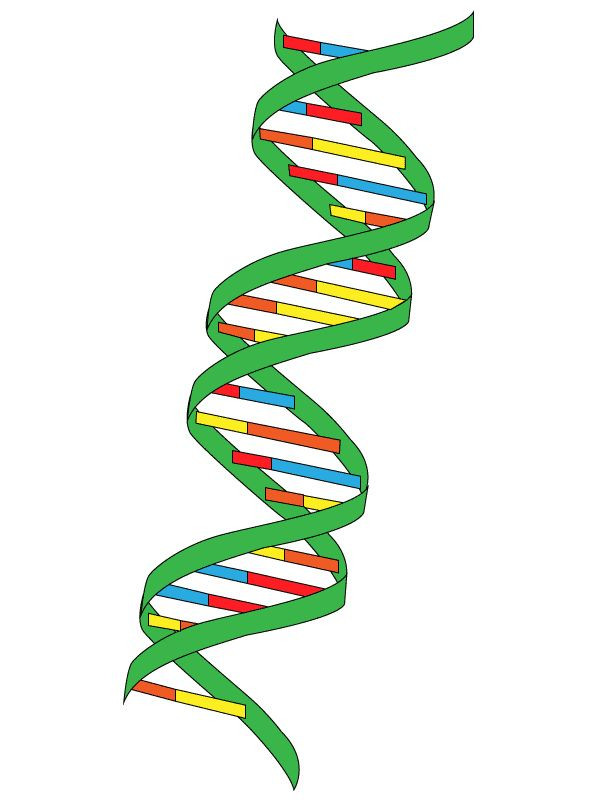'Crispr' Technology 'Edits' DNA And Corrects Adult Genes, Successfully Curing Disease

Genes are truly fascinating. They hold DNA, the very fundamental makeup of all life on Earth, and pass on instructions for how we look, act, and think from generation to generation. Genes are responsible for your eye color, your perfect pitch in music, and your allergy to cat hair. For many people, genes pass on less desirable traits known as genetic disorders. These are difficult to treat and nearly impossible to prevent. Genetic disorders can devastate entire families and cause couples to not have children for fear of passing on these life-altering conditions. Now, science has taken the first step toward curing genetic disease by successfully curing adult lab mice of an inherited liver disease through a process known as DNA correcting. The technique is still in its infancy but its laboratory success has proved that it is possible to cure living adult animals of a genetic disease.
Crispr
The technology used in the experiment is called Crispr. It is a genome editing technology that allows scientists to make almost any DNA changes at precisely defined points on the chromosomes or animals and plants. The Independent describes Crispr’s accuracy in pinpointing the individual letters of three billion “base pairs” of DNA in a molecule to be similar to correcting a single misspelled word in a 23-volume encyclopedia. In a recent experiment, scientists used Crispr to correct a single letter in the DNA of lab mice that had been mutated in gene necessary for liver metabolism. “The disease is caused by a single point mutation and we showed that the Crispr system can be delivered in an adult animal and result in a cure. We think it’s an important proof of principle that this technology can be applied to animals to cure disease,” Professor Anderson, lead researcher of the study, told The Independent.
Use on Humans
Possibly the most remarkable aspect of this study’s results is the fact that it may be transferable to humans. The mutation in the lab mice is similar to a mutation in the same gene which causes an equivalent inherited liver disease in humans. Scientists hope that the study’s success means that clinical trials in human patients could begin within a few years. “I think there will be a lot of progress made in the coming on to two years in using this approach for therapeutics and other real-world applications,” Professor Jennifer Doudna, a co-discoverer of the Crispr technique, explained to The Independent.
Current Hurdles
Although the possibility of using Crispr technology to cure genetic diseases in humans is exciting, before this becomes a reality, scientists must find a way to safely and efficiently deliver the technology to human cells. Researchers believe that it will be especially difficult to deliver Crispr to cells in the brain and other vital organs. “Crispr therapies will no doubt be limited for the foreseeable future,” Professor Craig Mello, of the University of Massachusetts Medical School, informed The Independent. This is because it is too dangerous to use high-pressure injection. Another possible method to deliver Crispr is with the assistance of a virus. Feng Zhang, of the Broad Institute at MIT, is currently working on using adeno-associated viruses, which are known to be harmless, to deliver the technology to the affected cells. Past studies in conventional gene therapy have found success in similar viral delivery of genes. “Obviously there would be numerous hurdles before [the Crispr] approach would be used in people, but the simplicity of the approach, and the fact that it worked, really are very exciting,” Doudna concluded.
What are genetic disorders?
Genetic disorders are caused by a mutation or a change in a single gene, or multiple genes. The mutation changes the gene’s instructions for making a protein and, consequently, the protein does not work well or is completely missing. Individuals can inherit the gene for a genetic mutation from one or both parents. There are three types of genetic disorders. In single-gene disorders, there is a mutation in one gene, such as in sickle cell anemia. For chromosomal disorders, the chromosomes are changed or missing. This can results in conditions such as in Down syndrome. A complex disorder is one where there are mutations in two or more genes. This occurs in conditions such as in colon cancer. In complex genetic disorders, one’s lifestyle and environment also play a large role. Genetic disorders can be identified through blood and tissues tests.
Published by Medicaldaily.com



























